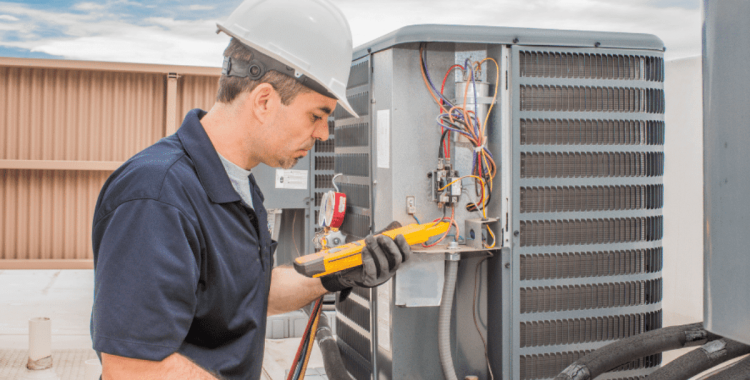Commercial buildings are starting to incorporate smart HVAC systems in their building designs. These heating, ventilation, and air conditioning (HVAC) systems help building owners boost energy efficiency, reduce costs, and improve the comfort of those occupying the space. They also contribute to a greener, more sustainable future. Smart HVAC systems can fine-tune and maintain ideal temperatures, airflow, and humidity in various zones. The systems utilize innovative sensor technology to create advanced automations that will give your company a competitive edge.
Thermal Sensors
The temperature in an office space can be monitored with the use of strategically placed thermal sensors. For example, in a crowded conference room, cooling can be increased to adjust for the added body heat while at the same time the air conditioning can be triggered to turn off from vacant offices or cubicle space.
The thermal sensors that are used in smart HVAC systems provide the increased capacity for automated control over traditional HVAC systems. They are able to deliver differentiated temperatures to small, independently controlled zones, whereas traditional units heat and cool an entire area to one temperature.
Occupancy Sensors
For some businesses, the current hybrid work model where employees split their time between working from home and at the office creates little consistency when it comes to occupancy. Much like thermal sensors that can detect changes in body heat in a space, occupancy sensors can be attached to HVAC systems to detect the arrival and departure of people in a building at any given time. These sensors help the system know when to turn on or off, to prevent energy use when unnecessary.
C02 Sensors
C02, or carbon dioxide sensors play an important live saving role by detecting levels of C02 gas in an enclosed space. While traditional CO2 sensors are just used for detection, when incorporated into a smart HVAC system, they provide even more value. When a preset threshold of the toxic gas is reached, a smart HVAC unit can increase the amount of fresh air going into that space. When occupancy is low and C02 levels are in a healthy range, the ventilation equipment reduces the outdoor air intake, lowering or even turning off heating or cooling.
Light Sensors
Today’s modern office spaces are designed to let in more natural light. However, direct sunlight can have significant impacts on temperature variations in a space and traditional HVAC systems do not have capabilities to fluidly adjust to the variances. As a result, areas that get more sun wind up too hot while areas with less natural light become too cold. With smart HVAC sensors, they can detect lighting and adjust the HVAC system accordingly so there are fewer discrepancies in temperature between the brightest and darkest areas of the building.


Why Make The Switch To Smart HVAC
The transition to smart technology impacts:
- Tenants – improved comfort, better health, and improved productivity
- Building owners – lower costs and higher energy efficiency
- Service and maintenance – easier to manage, simpler to troubleshoot, and less reliant on manual involvement
- The Environment – reduced carbon emissions and energy consumption
Get Energy Efficient with Express
For corporations with smart technology, there is no question that smart HVAC systems are an important step toward reducing costs and boosting energy efficiency. Express can help implement improvements to become more energy efficient. Contact us today to explore HVAC services and more for your commercial properties.






